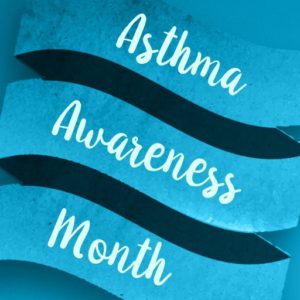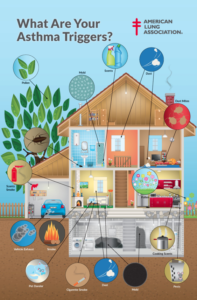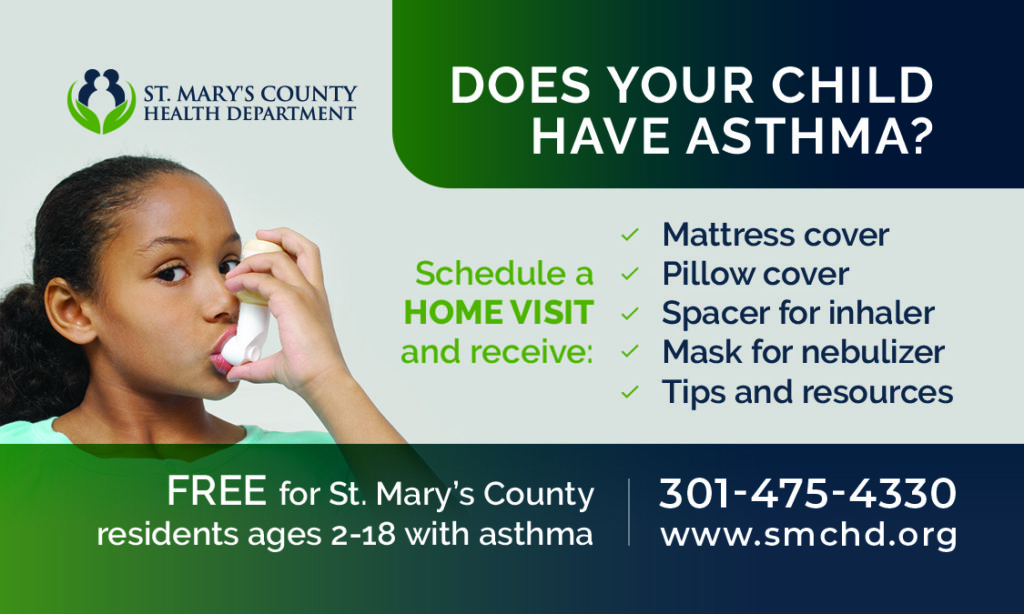
Asthma is a disease that affects your lungs. It causes repeated episodes of wheezing, breathlessness, chest tightness, and nighttime or early morning coughing. It is one of the most common long-term diseases of children, but adults can have asthma, too.
While there currently is no cure for asthma, there are things that can be done to help manage and control asthma.
What is an Asthma Attack?Click here to learn more about the prevalence and cost of asthma in St. Mary’s

An asthma attack may include coughing, chest tightness, wheezing and trouble breathing. During as asthma attack, the sides of the airways in your lungs swell and the airways shrink. Less air gets in and out of your lungs, and mucous clogs up your airways.
What Causes an Asthma Attack?
An asthma attack can happen when you are exposed to asthma “triggers.” Asthma triggers may vary from person to person. The best way to prevent an asthma attack is to know your triggers and learn how to avoid them. Some of the most common asthma triggers include tobacco smoke, dust mites, outdoor air pollution, cockroach allergen, pets, mold, smoke from burning wood or grass, and infections such as the flu.
How is Asthma Treated?
You can control your asthma! Take your medicine exactly as your health care provider recommends, and stay away from asthma triggers as much as possible. Remember that everyone with asthma may not take the same medication. Some medications come in pill-form and some are inhaled. It is important to take long-term control medicine even when you don’t have symptoms. Asthma medicines can have side effects, but most are mild and soon go away. Talk to your health care provider about your concerns with any side effects of your medicines.
Along with help from your health care provider, you can make your own asthma action plan. Decide who should have a copy of your plan, such as family members, care providers and teachers.
Home Visits for Children with Asthma
The St. Mary’s County Health Department provides a home visiting program for children and adolescents ages 2 – 18 who suffer from asthma. For qualifying children, a nurse from the health department conducts a free home visit, provides the family with asthma education and resources, and points out ways to minimize asthma triggers in the home environment. This type of intervention is proven to help improve quality of life, decrease asthma-related visits to the emergency department, and decrease missed days of school for children with asthma.
For more information about our Asthma Control Program, or to obtain a referral form for a home visit, visit www.smchd.org/asthma

For more information about asthma, visit the Centers for Disease Control and Prevention website.
[ This story originally appeared here... ]
